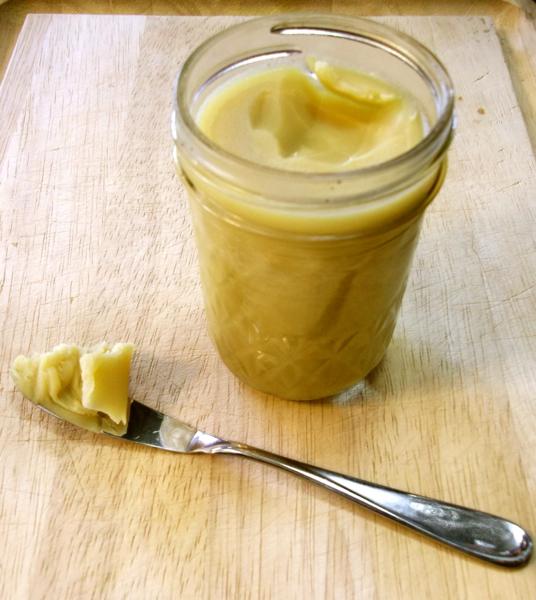Welcome to your new favorite fat.
Ghee is a form of clarified butter, which is just butter without the milk/dairy solids in it. It’s those solids that cause butter to scorch at a high temperature, which is why butter is not your best bet for sautéing or frying at high temperatures. However, with the solids removed, ghee has a higher smoke point even than olive oil and coconut oil, and those high temperatures become your friend again.
And it’s not just for cooking. You can use ghee in any way you might use butter: spread on bread or toast, or melted as a topping for meats or vegetables. Other benefits of ghee:
Dairy free: With nearly all of the milk solids (lactose and casein) removed, it can be tolerated by those with lactose intolerance. It’s Paleo-friendly as well.
Shelf stable: With the milk solids and moisture removed, it doesn’t require refrigeration. It won’t turn rancid, like butter can.
Healthful: contains vitamins A, D, E, and K. It may benefit those with colitis or Crohn’s disease, and it can reduce skin inflammation and treat burns. Some people believe that it may even slow some cancers and heart disease.
The process is pretty much the same for making clarified butter or ghee: Melt some butter, strain the liquid to remove the solids, and allow the strained liquid to cool. However, ghee is cooked much longer, until it turns a rich amber color, which lends it a sweet, nutty flavor.
This recipe/method comes from my friend Shamim, who authors a food blog called For the Love of Ghee. She recently gave me a sample of her homemade ghee, and once I tried it, I loved it. I used it for browning vegetables and meats and even made popcorn with it. When I spread it on my morning toast, its nutty flavor won me over. Once my sample dwindled, I visited Shamim’s blog to learn how to make more.
Step by step
Use any quantity of organic butter, preferably with a high fat content. For the most health benefits, use butter from grassfed cows. One pound of butter yields just over 8 oz. ghee.

Melt the butter in a saucepan over medium heat, stirring occasionally until completely melted. Reduce the heat and bring to a gentle boil.

Skim off and discard the foam that appears on top. The foam itself won’t affect the ghee, but with it there, you won’t be able to see the liquid underneath.

Maintain a gentle boil until the liquid becomes dark amber/orange and is very clear. This may take 10 to 20 minutes. As it simmers, the milk solids from the butter will sink to the bottom of the pan and eventually turn very dark.

Remove the pan from the heat and allow it to cool for about 15 minutes. Line a sieve with a coffee filter and place it over a clean and dry glass jar. Carefully pour the liquid through the sieve into a clean, dry glass jar or other container.

Allow the liquid to cool before putting the lid on the jar. Once cooled, it will become a light yellow solid. Store in a cool, dark cupboard, and it will keep for several months at room temperature. Enjoy!
 Diane Fluin is a Twin Cities-based writer, editor and food blogger. For more than two years, she has been documenting her culinary exploits on Diane’s Food Blog, which is geared toward both less-experienced home cooks as well as seasoned chefs. Diane’s blog entices readers with interesting recipes, appealing photos, and step-by-step details that bring each recipe to life.
Diane Fluin is a Twin Cities-based writer, editor and food blogger. For more than two years, she has been documenting her culinary exploits on Diane’s Food Blog, which is geared toward both less-experienced home cooks as well as seasoned chefs. Diane’s blog entices readers with interesting recipes, appealing photos, and step-by-step details that bring each recipe to life.

